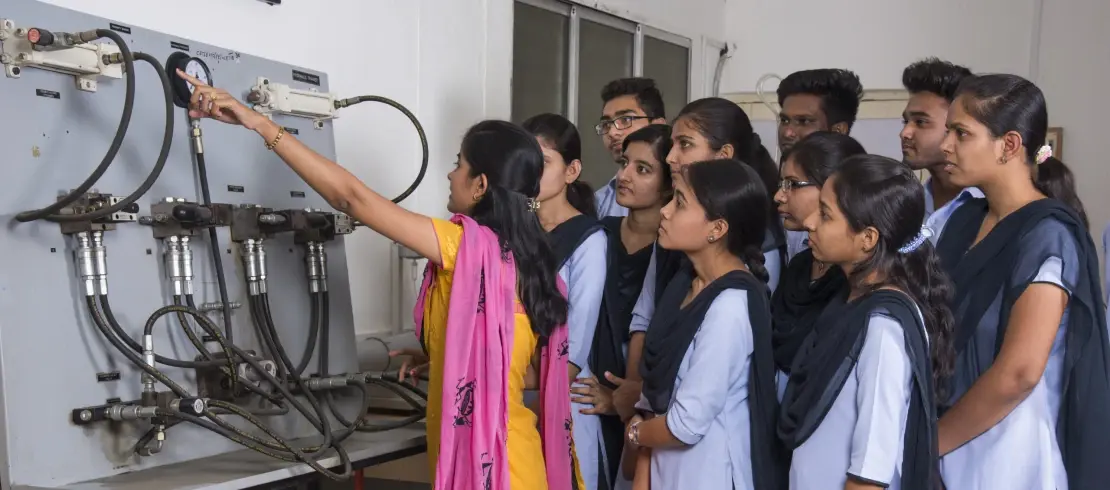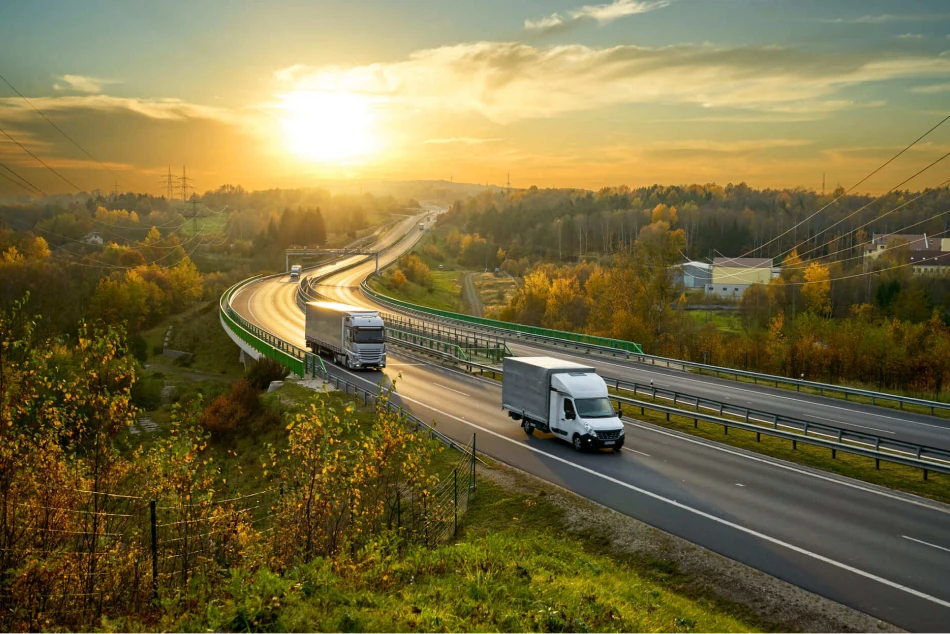Transformative Impact of Grade A Warehouses

Introduction:
In today’s rapidly evolving global economy, the role of industrial parks in fostering regional growth and development cannot be underestimated. Grade A industrial parks, with their state-of-the-art infrastructure and strategic location advantages, have emerged as key catalysts for economic progress. This article explores the domino effect spurred by Grade A industrial parks on regions, highlighting their role in transforming logistics, driving employment, enhancing social and economic amenities, attracting organized institutional real estate (IRE), and promoting sustainable practices . The Logistics and supply chain sector plays a pivotal role in driving economic growth and competitiveness. India, with its vast potential and strategic infrastructure and policy reforms, is on a trajectory to become one of the top 25 countries on the global Logistics Performance Index by 2030.
1. Becoming a Hub for Logistics:
The local manufacturing industry in India benefits greatly from its proximity to well-connected transportation networks. Government investments in local infrastructure, such as roads, rail networks, ports, and airports, significantly contribute to the region’s appeal for businesses.
The availability of sound infrastructure has facilitated better supply chain management, ultimately reducing operational costs. For example, the Delhi-Mumbai Industrial Corridor (DMIC), a key infrastructure project, is developing a high-speed freight corridor connecting major cities, industrial nodes, and ports along its route. The DMIC is set to significantly enhance connectivity and boost logistics efficiency in the region. Furthermore, the Indian government’s focus on infrastructure development, such as the INR 100 trillion Pradhan Mantri Gati Shakti National Master Plan, reinforces the commitment to improving transportation networks and creating multi-modal parks across logistics hubs.
The consumer demand is a driver to transform a location into a hub, but with changing times, these locations not just service their proximity but also act as a point for freight forwarding, grading sorting etc. Online shopping remains popular among Indian shoppers, especially millennials, a CBRE survey reveals1. Moreover, rural penetration in online shopping has picked up dramatically blurring the urban-rural divide. On-demand grocery, essentials shopping and same-day delivery of goods has put a new spin on timely last-mile delivery. As the supply chain gets more regional, it’s imperative for logistics companies to locate local storage and distribution, as well as fulfillment and consolidation centres closer to these key demand areas.

2. Fostering Business Growth and Employment:
The local logistics sector in India is experiencing a significant shift, becoming a pivotal force driving economic growth and socioeconomic progress. As logistics hubs gain prominence, a combination of well-planned policies, infrastructure advancements, and market dynamics is propelling their expansion. As per the CBRE India Market Outlook report, the projected growth of the industrial and logistics (I&L) sector in India indicates a remarkable increase to 24-26 million sq. ft. by 2023, surpassing the levels achieved in 2022.
This growth surge is driven by third-party logistics (3PL), engineering, and manufacturing occupiers, contributing to economic development and job creation. The establishment of larger warehouses and distribution centers not only generates employment opportunities but also uplifts the living standards of surrounding communities. Moreover, the logistics sector enhances economic efficiency by reducing transportation costs, streamlining supply chain operations, and boosting overall productivity. This symbiotic relationship between logistics expansion, employment generation, and economic efficiency holds the key to inclusive growth and social progress in Indian regions.
3. Rise in Social and Economic Amenities:
The growth of industrial parks not only brings economic prosperity but also contributes to the improvement of social and economic amenities in the region. As businesses thrive, there is an increased demand for services such as healthcare, education, retail, and entertainment. Local communities benefit from improved infrastructure, schools, hospitals, and recreational facilities.
Industrial parks are now a support system for the expansion of SMEs, which are a substantial part of the Indian economy and a key source of jobs. Organizations that use pre-built infrastructure save time and money while establishing their operations. Along with assisting SMEs, industrial parks play an important role in assisting the chemical and pharmaceutical industries too. In recent years, the chemical and petrochemical industries in India and around the world have seen substantial growth. According to the Indian Chemical Council, the Indian chemical sector is worth approximately USD 200 billion, with a projected increase to USD 304 billion by 2025, growing at a CAGR of 9.3%. As a result, the Indian government is focusing on developing various chemical industrial parks across the country to assist the growth of the chemical sector in India. The existence of these parks would help provide chemical companies with a one-stop shop for establishing production facilities and benefiting from shared infrastructure and economies of scale. Industrial parks for chemical industries are critical to supporting expansion. This ecosystem is crucial for chemical businesses to negotiate the complicated regulatory landscape and maintain environmental and safety compliance.
With the availability of such infrastructure and facilities, industries can potentially produce items at a lesser cost, making them more competitive in the global market. This, in turn, will aid in the expansion of our economy by increasing exports. Furthermore, the industrial parks will aid in the creation of more investment opportunities, which will stimulate economic growth.
4. Entry of Organized Institutional Real Estate (IRE):
As demand for industrial space grows, institutional real estate (IRE) developers recognize the potential for long-term investments in Grade A industrial parks. These players bring expertise, capital, and a focus on sustainable development, further enhancing infrastructure and community relations within the region.
In 2017, the transport and logistics sector was accorded “infrastructure status.” This classification allows the industry to access cheaper foreign currency funding and raise greater capital investments via the External Commercial Borrowings method. It also assists the sector in obtaining financing at more competitive rates, for longer periods of time, and for larger sums. Furthermore, storage and warehousing are now eligible for 100 percent FDI, which offers up a myriad of options for the industry as well as for foreign investors eager to capitalise on India’s thriving economy.
India’s new Foreign Trade Policy (FTP) 2023 is crafted to simplify trade and logistics thus providing the impetus to Indian exports. This is envisaged to increase goods and services exports to $2 trillion by 2030. The provisions in the FTP can help shape India as a prominent global trade hub by reducing trade barriers, improving exports and promoting regional trade. These actions can turn India into a more competitive global player and attract more foreign investment, resulting in increased economic growth and development, creating more jobs across all levels, and improving the standard of living for Indians.
5. The ESG Impact:
There is a growing body of evidence that green buildings that can deliver superior environmental performance can also deliver a range of tangible and intangible financial performance benefits to developers, investors, occupiers and other stakeholders, states the World Economic Forum. This stronger emphasis on ESG practices is now an integral part of the key decision-making process when occupiers scout for industrial real estate.
As sustainability becomes a top priority, industrial parks adhering to stringent Environmental, Social, and Governance (ESG) policies gain preference among eco-conscious companies. Such parks focus on recycling, waste management, reducing carbon emissions, promoting equal opportunities within the facility, and complying with regulations and compliances transparently. Investors and occupiers gravitate towards these sustainable industrial parks.

6. Grade A Infrastructure and Enhanced Logistics Efficiencies:
The industrial and logistics (I&L) sector is expected to witness continued growth, with a projected supply of 24-26 million sq. ft. in 2023. This demand is primarily driven by third-party logistics (3PL), engineering, and manufacturing companies. This demand needs to be satisfied through a complex solution, rather than the usual one. Grade A warehouses that adhere to global standards become the preferred choice for international players and manufacturers.
These warehouses have features such as extra clear height, high-performance flooring systems (FM2), large truck aprons, and docking stations, facilitating easier and faster movement. Distribution networks are enhanced, and last-mile delivery is expedited, resulting in improved productivity and employment opportunities across the supply chain hierarchy.
Conclusion:
The impact of logistics hubs on regional growth is multi-faceted, ranging from the employment generation, improved social amenities, and the entry of organized institutional real estate. As per the Economic Survey 2021, the logistics industry accounts for 13-14 per cent of the country’s GDP. The industry garnered investments worth US$ 1 billion (Rs. 8,257 crore) at the beginning of 2022. The logistics and industrial industries’ quarterly average investment was around 1.3 times more in 2022 than it was in 2021 when it was US$ 335.69 million (Rs. 2,755) crore, states IBEF. As we move forward, Grade A industrial parks will continue to play a vital role in fostering sustainable growth, attracting investments, and driving forward the principles of environmental, social, and governance (ESG) practices in the industrial sector.
Citations:
- https://economictimes.indiatimes.com/industry/services/retail/over-55-of-small-town-residents-preferred-online-shopping-for-gifts-clothing-and-footwear-survey/articleshow/98172870.cms
- https://www.cbre.co.in/insights/reports/india-industrial-and-logistics-figures-h2-2022